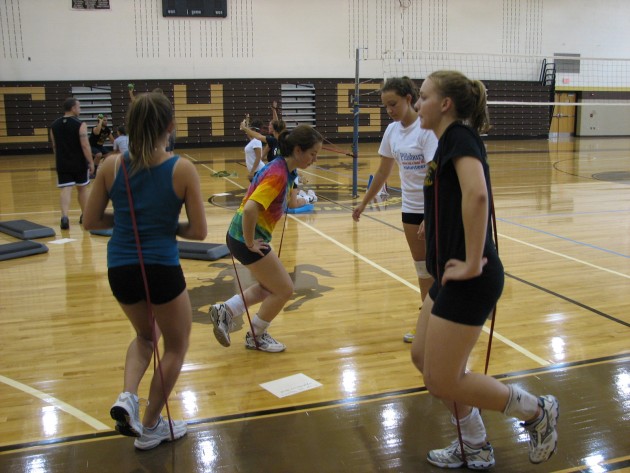
Volleyball training
Performing your drills with purpose has many benefits
If a player understands the purpose of the drill, rather than just going through the motions, they will be more interested in the training.
Drills for volleyball are important for developing habits. If players are constantly focusing on how to perform a volleyball drill correctly, they will improve their ability to focus during competition.
If coaches will set goals and set a specific focus to a drill, they will have better understanding of when to move on or adjust the drill for a better training effect.
Volleyball drills can be broken down into 3 categories :
- Skill and Movement Specific
- Tactical, Systematic, Strategic
- Volleyball Conditioning Specific
Skill and Movement Specific
Volleyball skill and movement drills are the most common types of drills coaches have their players perform.
Skill and movement drills are designed to help players enhance their volleyball skills through repetition.
It’s important to note that the purpose of these drills is to develop playing skills such as blocking and setting. These aren’t volleyball conditioning drills.
Furthermore, it’s important for every player to understand the specific goals of each drill and what skills need to be of focus.
Use repetition to build habits
Drills help you develop skills through repetition and practicing with purpose.
Drills for beginning volleyball players should focus on executing the drill with proper technique.
It’s important to realize that every second you spend on the court, whether in practice, competition, or just playing a pick up game, you are continually creating or building upon habits.
It’s much wiser to develop correct skills early, when you first start playing the game because it’s much more difficult to change technique wants habits have been made.
Volleyball drills should be progressive
Players need to perform drills progressively, depending on their playing experience and the time of year of training.
Drills range from learning an individual skill such as a forearm pass, to learning combinations of skills such as blocker pulling off the net and then taking an approach to hit.
The difficulty of drills need to progress appropriately with the players in training.
For example, let’s say you are performing a drill that involves making a pass then taking an approach to hit. If the focus of the drill is to execute an effective attack hit, and your passing skills are lacking, the focus of the drill will become making better passes.
This drill turns into a passing drill, when the intent was to work on hitting.
Therefore, it is important volleyball drills are modified to fit the ability of the individual players.
Performing these drills with proper focus, repetition, and progression saves time and energy.
Tactical, Systematic, Strategic
Tactical, systematic, and strategic drills focus on team execution.
These drills often involve combinations of playing skills.
Therefore, these drills are often most effective when performed after players have developed their individual playing skills.
Volleyball coaches often have very different philosophies when it comes to playing strategy. Player’s have different talents, strengths, and weaknesses that make their teams unique.
For these reasons, strategic drills often vary from one team to another.
It is often wise to run teams through fun drills that are unique and different from what players are used to. Fun volleyball drills will often spark creativity in players and help avoid volleyball player burnout.
Team communication is important
Every team needs team drills that help train their players to interact with one another.
Drills that involve players calling the ball to pass or communicating to attackers where to hit are important to success.
Volleyball Conditioning Specific
Volleyball drills can often be designed with the focus being on volleyball conditioning.
If conditioning is one of the goals of a volleyball drill, coaches need to be aware the energy needed may take away from performing the drill with proper skill technique.
It is most common to perform volleyball conditioning drills in the off-season and pre-season rather than in-season because proper skills execution is less important during these times.
It’s usually best to train volleyball skills and conditioning separately when in-season.
For example, when in-season a team could work on sharpening their passing skills at practice when they are fresh. They may have a separate time during practice or maybe a separate day for conditioning.
Obviously, the volleyball team that has gone through the proper volleyball conditioning in the off-season and pre-season is going to have a much bigger advantage over the teams that haven’t.
While the teams that are “out of shape” when the season starts are trying to build up their conditioning, the teams that are in good volleyball condition will just need to work to maintain their high level of conditioning which allows for a much easier time sharpening their skills and working on team tactics and strategies.
Read more news from our Fitness section.
Check out our Stretching section, every Sunday a new story! Tomorrow read about How to Stretch to Relieve Back Pain